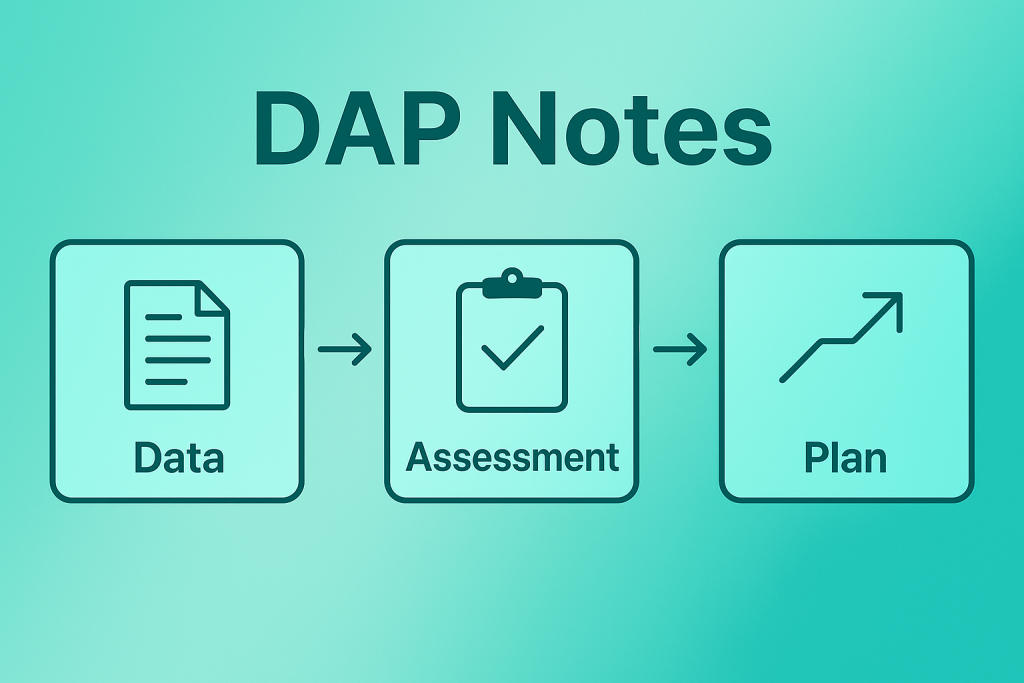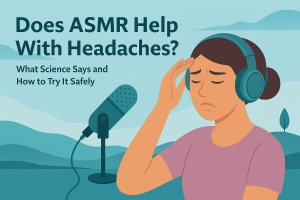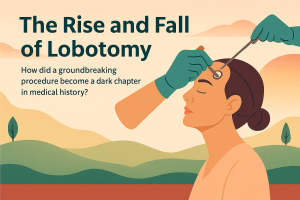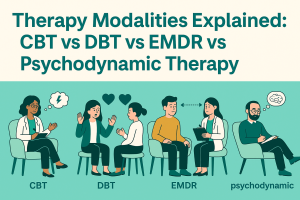How to Write DAP Notes (with Examples)
DAP notes keep documentation fast and focused: Data captures what happened, Assessment is your clinical read, and Plan sets clear next steps. Below, you’ll find a step-by-step workflow, real excerpts, and pro tips that stand up to audits.
What is a DAP note?
A DAP note is a three-section progress note (Data, Assessment, Plan) used widely in behavioral health. It gives you a straight line through the session: what happened, what it means, and what you’ll do about it. Many experienced clinicians prefer DAP for its speed and clarity.
New to note formats? Compare against SOAP notes and see how DAP plugs into your treatment plan.
When should you use DAP?
Great fit
- Solo practice or small team needing speed and consistency
- Clear sessions with targeted goals and low admin complexity
- Experienced clinicians who don’t need heavy scaffolding
Consider SOAP instead
- Multidisciplinary settings needing explicit subjective vs objective
- High-acuity or medically complex cases
- When multiple providers will read and co-author notes
DAP flow (at-a-glance)
How to write DAP notes
1) Data
- Client report (symptoms, stressors, functioning) — include brief direct quotes
- Observable data (appearance, affect, behavior, MSE elements)
- Interventions attempted and client’s immediate reactions
- Scales/scores (PHQ-9, GAD-7), vitals if relevant
2) Assessment
- Diagnosis and clinical formulation (tie back to Data)
- Progress since prior visit: improving, stable, or worsening
- Risk assessment (SI/HI, protective factors, safety plan status)
3) Plan
- Interventions/modality, frequency, homework
- Referrals/coordination, labs/med consult if applicable
- Next review date or treatment-plan update window
DAP note examples
Example #1 — Individual therapy (anxiety)
Client: Peter Patient | DOB: 05/15/1985 | DOS: 11/17/2023 | Time: 2:01–3:04 PM | Location: Office Data: Client reports “I’m on edge at work and not sleeping.” Restlessness, poor concentration. Tried 4-7-8 breathing during session; client completed 3 cycles and reported slight relief. GAD-7 today: 13 (previous 15). Affect anxious, cooperative; no psychosis; oriented x4. Assessment: GAD (F41.1) with modest improvement vs last visit; anticipatory worry re deadlines. No current SI/HI; protective factors: partner support, consistent attendance. Plan: CBT-focused sessions weekly x4; daily breathing practice (5 min AM/PM); introduce PMR audio next visit; track sleep in journal; recheck GAD-7 in 2 weeks.
Example #2 — Medication management
Client: Alex R. | DOS: 03/04/2025 | Telehealth Data: Reports improved focus but mid-day anxiety; PHQ-9 = 7 (↓ from 11); GAD-7 = 12. On sertraline 50 mg qAM; no side effects except mild nausea day 1–3. Denies SI/HI. Assessment: MDD, recurrent, mild (F33.0) improving; residual performance anxiety likely situational. Plan: Continue sertraline 50 mg; add hydroxyzine 10 mg PRN performance situations (review risks/benefits). Coordinate with therapist re exposure hierarchy; follow-up 3 weeks; safety plan reviewed.
Example #3 — Brief couples session (DAP condensed)
Data: Partners describe conflict over chores. Observed escalation pattern; used time-out skill in session. Assessment: Communication deficits with negative sentiment override; no IPV disclosed; both motivated. Plan: Weekly EFT-informed sessions x6; assign 2x/week check-in ritual; practice softened start-up.
Tips & common mistakes
Pro tips
- Block 5–7 minutes post-session for a quick DAP draft, then finalize at day’s end.
- Use one short client quote per note to anchor authenticity.
- Tie every Plan item to something in Data or Assessment.
- Set review reminders (30–60 days) for formal plan updates.
Common mistakes
- Vagueness: “doing better” without scale or behavior change.
- Shorthand: avoid internal abbreviations others won’t recognize.
- Over-narration: long play-by-play that obscures clinical essentials.
DAP vs SOAP vs BIRP (quick compare)
Want deeper dives? See progress notes, SOAP notes, and intake documentation best practices. When it’s time to close care, see our discharge summary guide.
What is a DARP note?
DARP = DAP with an added Response section to capture how the client responded to interventions. Use when you need closer tracking of adherence, affect tolerance, or skill acquisition.
Data → Assessment → Response → Plan Example Response: “Used grounding in-session; HR ↓ from 96 to 78; client rated distress 7→4.”
Want cleaner, faster documentation?
We help teams streamline progress notes and treatment plans aligned to payer standards.
Talk to a practice consultantFrequently asked questions
How fast should I write my DAP notes?
Do I need exact quotes?
Where do I put risk?
What if the client missed the appointment?
Author & Reviewer

Created by the TherapyDial Editorial Team. Clinically reviewed by licensed therapists for clarity and compliance.




